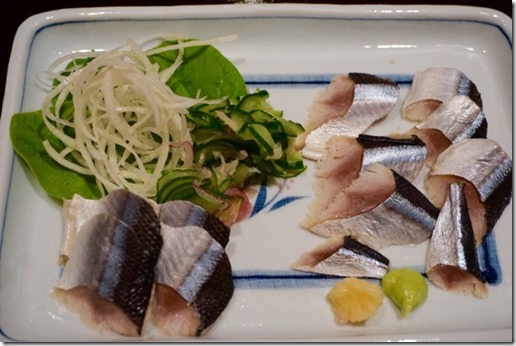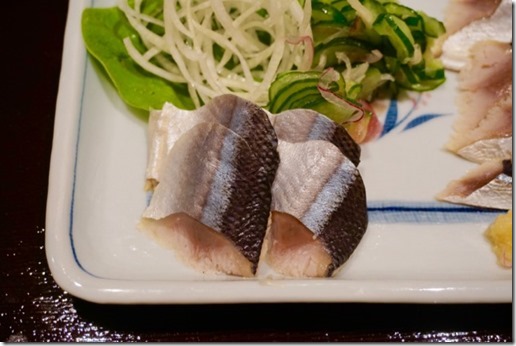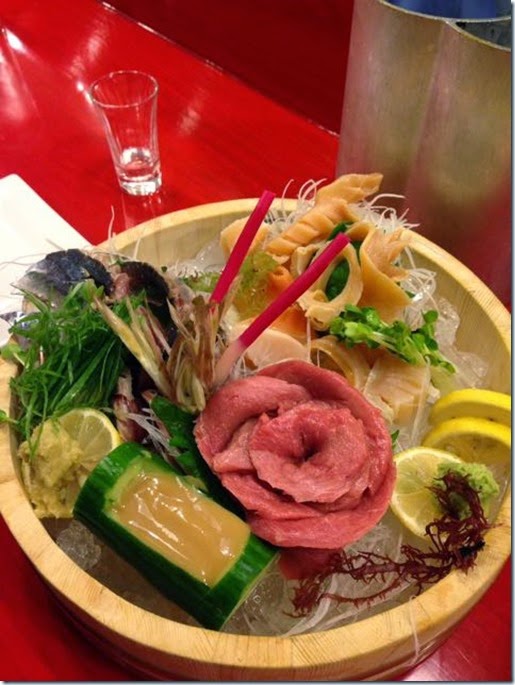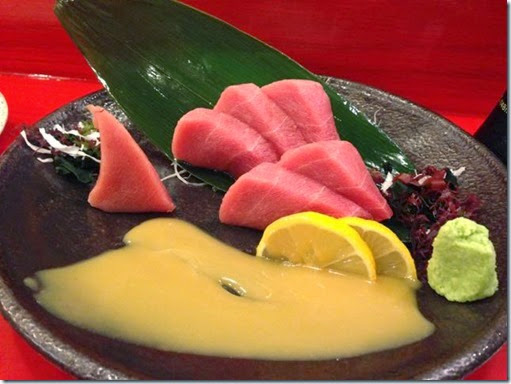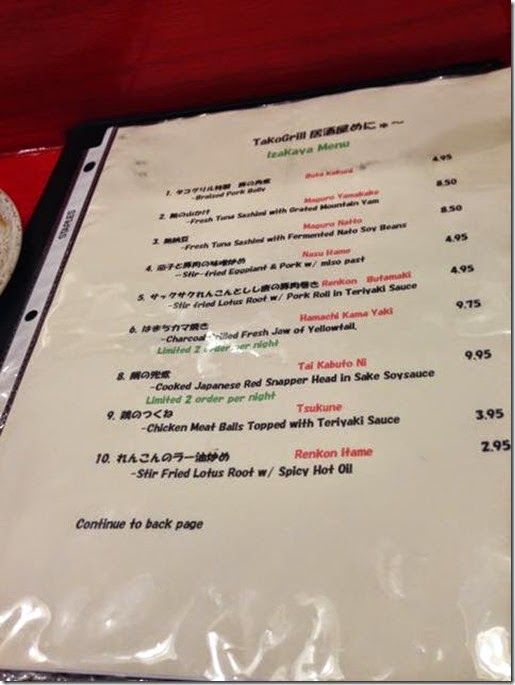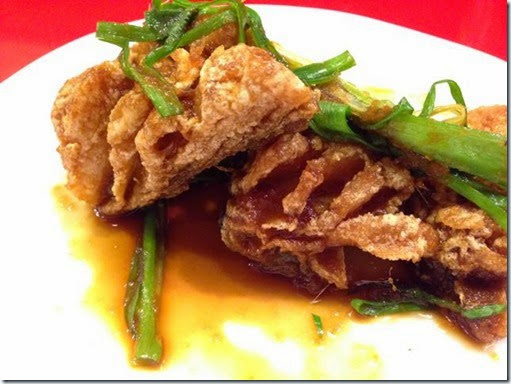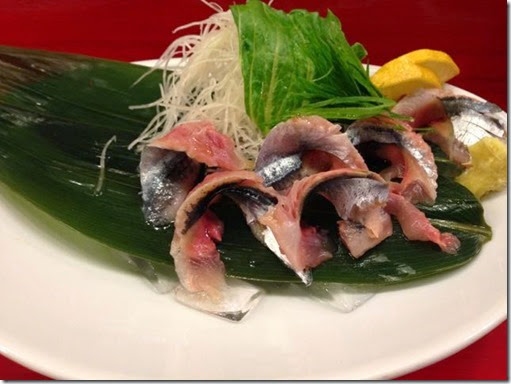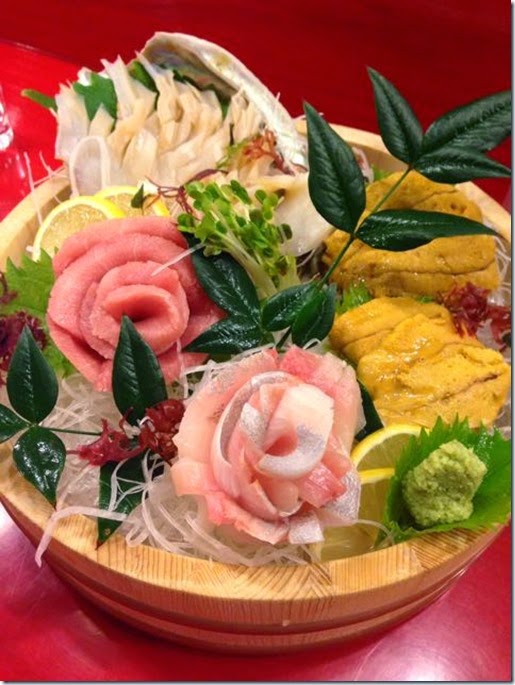*Digression alert!
This was supposedly started at a sushi bar in Asakusa 浅草 called "Kintarouzushi honten";金太楼鮨本店 as a staff meal or "makanai" 賄い. It was made from the scrap meat of tuna including the fatty meat or "toro" which was scraped off of the skin and bone (called "nakaochi" 中落ち) and chopped into a paste like concoction. This was later served to the "regulars" as either "gunkan" 軍艦 sushi, small "hosomaki" 細巻き rolls or as a topping for a "donburi" 丼 rice bowl. Initially, only large sushi bars which could buy whole or big portions of tuna had access to "nakaochi". Later as it gained popularity,"negitro" was commercially produced on an industrial scale from the red meat of low grade tuna with added oil, flavoring, and other additives (Pre-packed ones are widely available in regular markets or by mail order in Japan for consumption at home).The availability of inexpensive and widely distributed commercial "negitoro" products made it very popular in sushi bars like those with "belt conveyer" or "kaitenzushi" 回転寿し. It was named with a word "negi" but it does not mean "scallion" but it is reportedly related to another famous restaurant in Asakusa called "Mugitoro**" 麦とろ which the sushi chef and his family frequented. He named this dish "negitoro" on a whim just because it rhymes with "mugitoro".
**Another digression alert!! This Japanese restaurant is famous for serving mugi-toro. "Mugi" literally means "wheat" in Japanese but, in this context, it is barley. Thus, "Mugi-toro" is cooked barley or "mugi meshi" 麦飯 topped with "tororo" とろろ which is grated "slimy" mountain yam "Yamaimo" 山芋. The combination is abbreviated as "Mugi-toro". Some years ago my wife and I were wined and dined at this restaurant and we were served "negitro" as a last "shime" dish. Slimy potato on cooked barley was not our favorite despite its touted health benefits
I made this dish very close to the recipe, I topped it with chopped scallion, nori, and thinly sliced myoga.

I served it with wasabi and soy sauce (this time a special "Sashimi soy sauce" 刺身醤油 from the bottle). My wife decided, it was not efficient to dip a small amount of negitoro into the soy sauce so she took a short cut and poured the soy sauce with wasabi over the negitoro. This preparation really improved the taste and texture of this less than prime tuna. Remarkably it really had a taste reminiscent of toro.
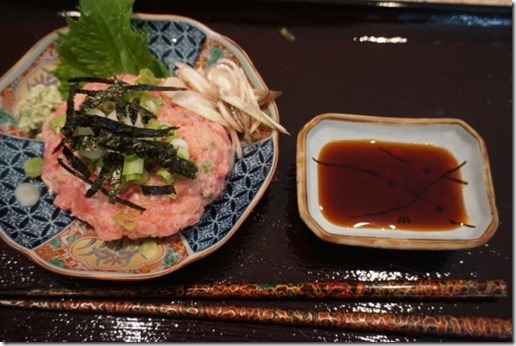
It started with frozen block of yellowfin tuna, thawed (I used half of the block, this was rather large block).

I divided this half of the block into two. I first thinly sliced the tuna, added chopped scallion and perilla leaves (optional) and mayonnaise with a bit of soy sauce (this is a deviation from the recipe). and chopped and mixed (this process is called "tataku")

Because of the added mayo, the color became lighter visually resembling fatty tuna or toro. Following the recipe, I cut the remaining tuna block into fine dice (but not into paste) to give it some texture.

I mixed it which is the final product. We really like it. Addition of mayo makes this low quality red meat of tuna more unctuous and fatty like real toro. This is better than "namero" made from the same tuna. For the negitoro, we opened a bottle of Dassai 50 獺祭.


